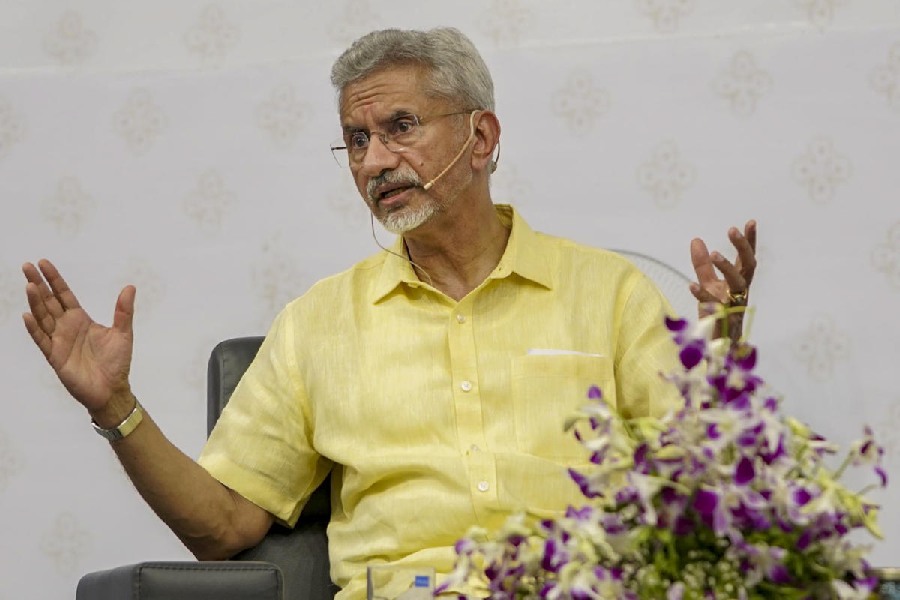 |
Patna, May 30: Jungles in Rajasthan and Haryana are popular among wildlife watchers for blackbucks (antelope cervicapra). But Bihar’s animal watchers have an option near home to watch the antelopes. All one needs to do is to visit the Chunnilal and Hakimpur villages of Buxar district, around 70km west of Patna, where herds of blackbucks can be seen on agricultural fields.
Though this Schedule I animals are found in abundance in the state, the forest department is doing precious little to protect the animals — a prized catch of poachers.
The Salman Khan incident is a case in point when the Bollywood superstar landed in jail for alleged poaching of a blackbuck while he had gone to Rajasthan for the shooting of a film.
As things stand now, the blackbucks of Buxar are dependent on the crop fields of local farmers and some vegetation along the roads to feed on.
These helpless animals have to travel a long distance, around 15km, to quench their thirst during the summer months. After the local water sources dry up, the Ganga remains their only source of drinking water.
“The source of drinking water is a big problem for these animals. The state government should do something on this front if it intends to keep these animals in good shape,” Zoological Survey of India scientist Gopal Sharma told The Telegraph.
Sharma had recently visited Buxar district.
Barring a few natural water holes that had very little volume of water, around 200 blackbucks residing in the area had no permanent source of water, the scientist said.
The forest department officials are working out a plan, which after implementation, would relieve the blackbucks from the Herculean task of travelling long distances for drinking water.
“I have submitted a proposal to the headquarters which talks of using farmers’ pumping sets during summer months (April to mid-June) for pumping water to the low lands so that blackbucks could use them as sources of drinking water,” Bhojpur divisional forest officer Awadhesh Kumar Ojha said.
He had nothing much to offer when asked about the steps being taken to provide shelter to the blackbucks.
Bihar principal chief conservator of forest (PCCF) Basheer Ahmad Khan came up with a very interesting answer when he was asked the same question.
“We don’t have forestland in the area. The plantation work can be done there only after getting the consent of the landowners. We are trying for that,” he said.
As far as protection of the blackbucks is concerned, the state forest department for the first time earmarked about Rs 1.5 lakh from the central funds provided to the state Compensatory Afforestation Management and Planning Authority in the previous fiscal (2010-11). While a part of these funds has been used to put up 20 display boards carrying messages about the importance of blackbucks, the remaining part has been used to rope in the services of five trackers to keep an eye on the movement of the antelopes.
Apart from these trackers and forest officials, the villagers play a very important role in safeguarding the blackbucks. Not a single incident of poaching of this animal has been reported from the area.
“During interaction, the villagers informed us that there has been a tradition of not harming the animal and the reports of the Salman Khan incident acted as a deterrent for those thinking in terms of breaking the year-old tradition,” Sharma said.
The authentic information about the presence of this endangered species in Bihar first came to light in a book titled Back to Wall. Late SP Shahi is its author.
The book contains both pictorial and descriptive documentation of the presence of blackbucks in Bihar. Shahi headed the state forest department from 1956 to 1969.










